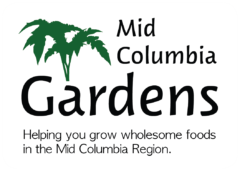All of this warm weather has readied my tomato plants sooner than expected. The last of them should be ready to go by this weekend. With that in mind, these are the varieties that are available, $1 per plant:
- Kelloggs Breakfast

Large, orange tomato. Meaty, very juicy beefsteak with excellent flavor. Tomatoes can be one to three pounds each, 4-8”, on vigorous indeterminate vines. Larger tomato varieties take longer to start bearing, and then produce large quantities until frost. This is one of my favorites for everything from sandwiches to orange spaghetti sauce.
- Ildi
Yellow grape tomato. Early, flavorful, and prolific, this is a good alternative to the famous yellow pear tomato which I have such fond memories of as a child, but which I found bland, mushy, and prone to splitting as an adult. - Marianna’s Peace
Large pink tomato. Dependable producer of one to two pound tomatoes with good, balanced flavor. Potato leaf foliage is less finely cut that typical tomato foliage. One of a class of excellent German pink tomatoes that deserve a spot in your garden. - Black Cherry
Purple cherry tomato. Dark like the Cherokee Purple, in a typical cherry tomato size, with an added fruity zing. Unlike any tomato I’ve tried, and very addictive. - Gardener’s Peach

Small fuzzy pale yellow tomato. Known by various “Peach” names, this tomato has a fuzzy feel to it that is hardly noticeable when you actually eat it. These extremely juicy tomatoes are typically a bit larger than a golf ball and are some of my children’s favorites. Very productive throughout the season.
- Azoychka – Sold Out!
Medium yellow tomato. Ripens earlier than most, with a unique flavor described variously as mild or citrusy. A good slicer or salad variety. - Chadwick Cherry
Red cherry tomato. Typical to large cherry size on vigorous, productive vines. The tomato isn’t as sweet as many of the common modern cherry tomatoes, but it has a very robust large tomato flavor that’s hard to find in such a small package these days. - White Queen
White medium tomato. Yes, it’s really white, though it develops a yellow blush on the skin which helps determine ripeness. Makes a great pale tomato sauce and contrasts nicely when cut up with other varieties. This variety was selected for it’s stronger flavor relative to other white types. - Giant Green

Ripe Green Tomatoes Large green tomato. A meaty beefsteak variety which stays green even when ripe. Like White Queen, it develops a yellow, even amber blush, especially on the blossom side, when it is ripe. Excellent flavor, one of my favorites. Also has potato leaf foliage.
- Opalka
Long red paste tomato. Looking like an elongated roma, almost pepper shaped, this variety has a stronger flavor than typical paste varieties. - Cherokee Purple
Medium purple tomato. Darker than a typical red tomato, both in the skin and the flesh, this celebrated variety has an added flavor component that is ofter described as smoky or dark. Recommended. - Aunt Gertie’s Gold
Large yellow tomato. One of the best yellow tomatoes available, with full flavor and texture. Potato leaf foliage. - Sungold (Hybrid)

Sungold (Hybrid) Orange cherry tomato. The only hybrid tomato variety I grow, Sungold is very sweet and very flavorful. Consistently a favorite of everyone I share it with.
- Traveler
Medium pink tomato. Also known as Arkansas Traveler, this round medium tomato is known for its performance in hot, sunny weather. - Sioux
Medium red tomato. A beautiful round red tomato which continued to produce tomatoes for me through the heat of the summer last year, when all of the other large varieties took a break from setting fruit. - Brandywine OTV – Sold Out!
Large red tomato. A descendant of the famous Brandywine lineage, this tomato is more productive and better suited to the heat than the others. Brandywines are renowned for their flavor.







